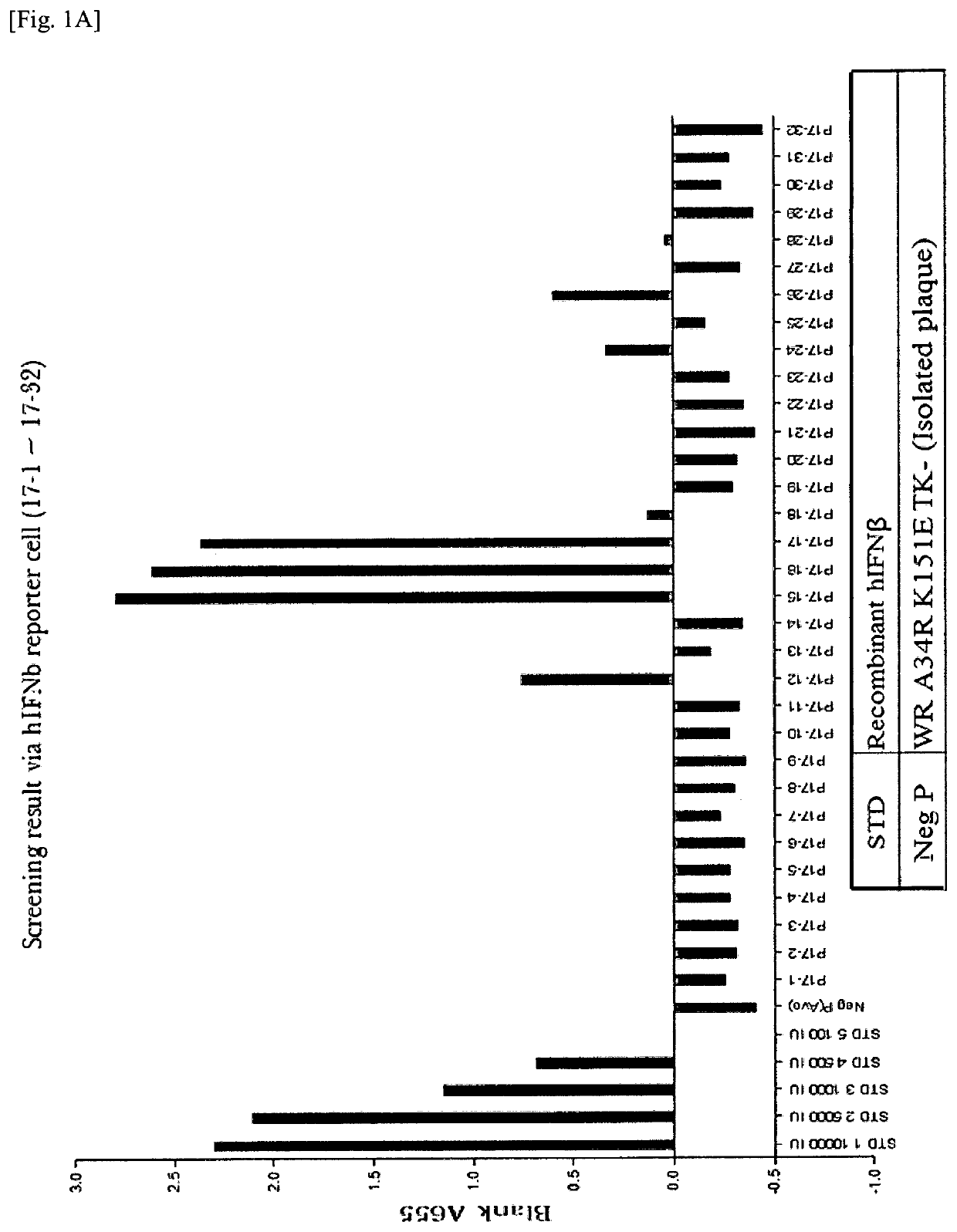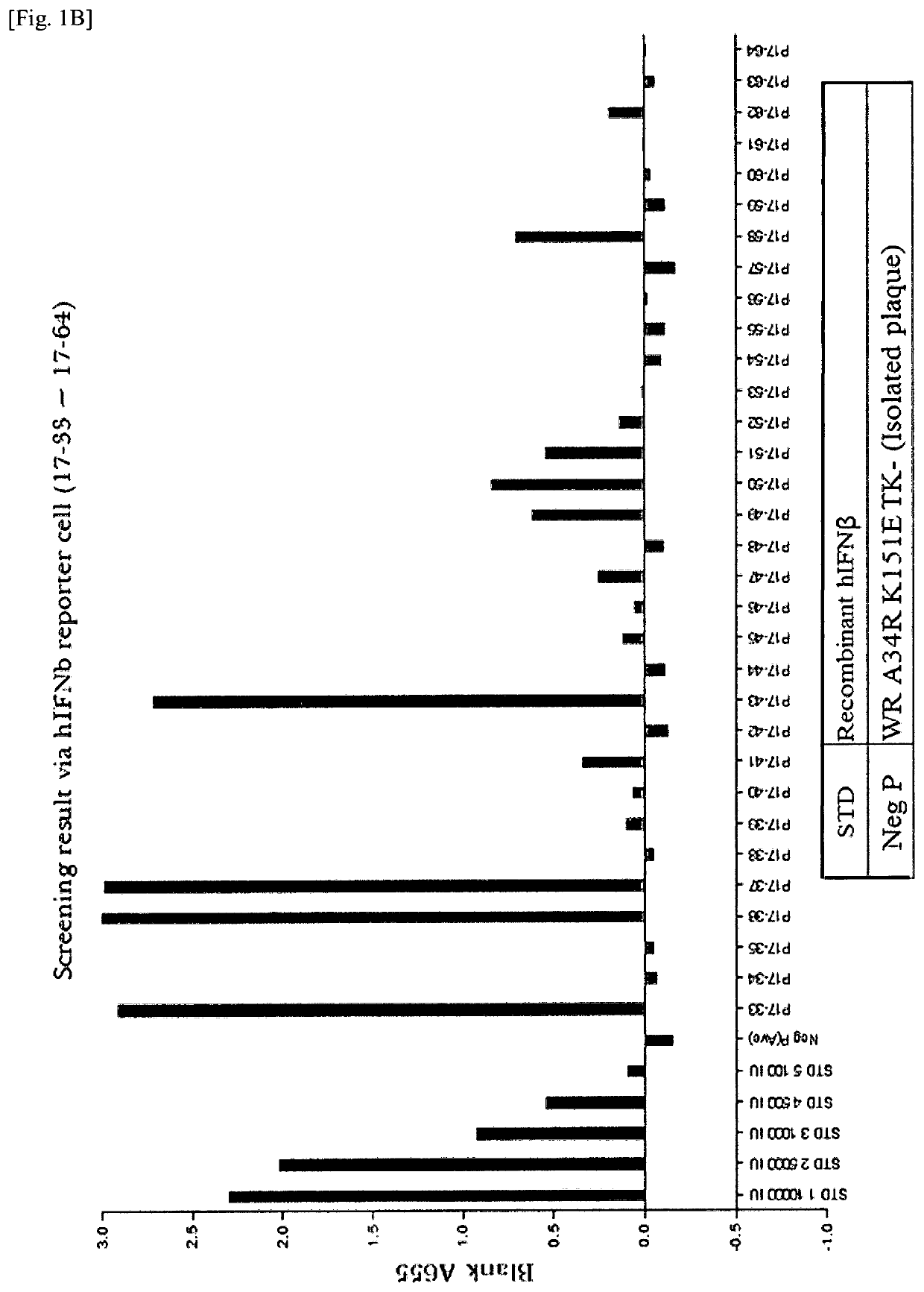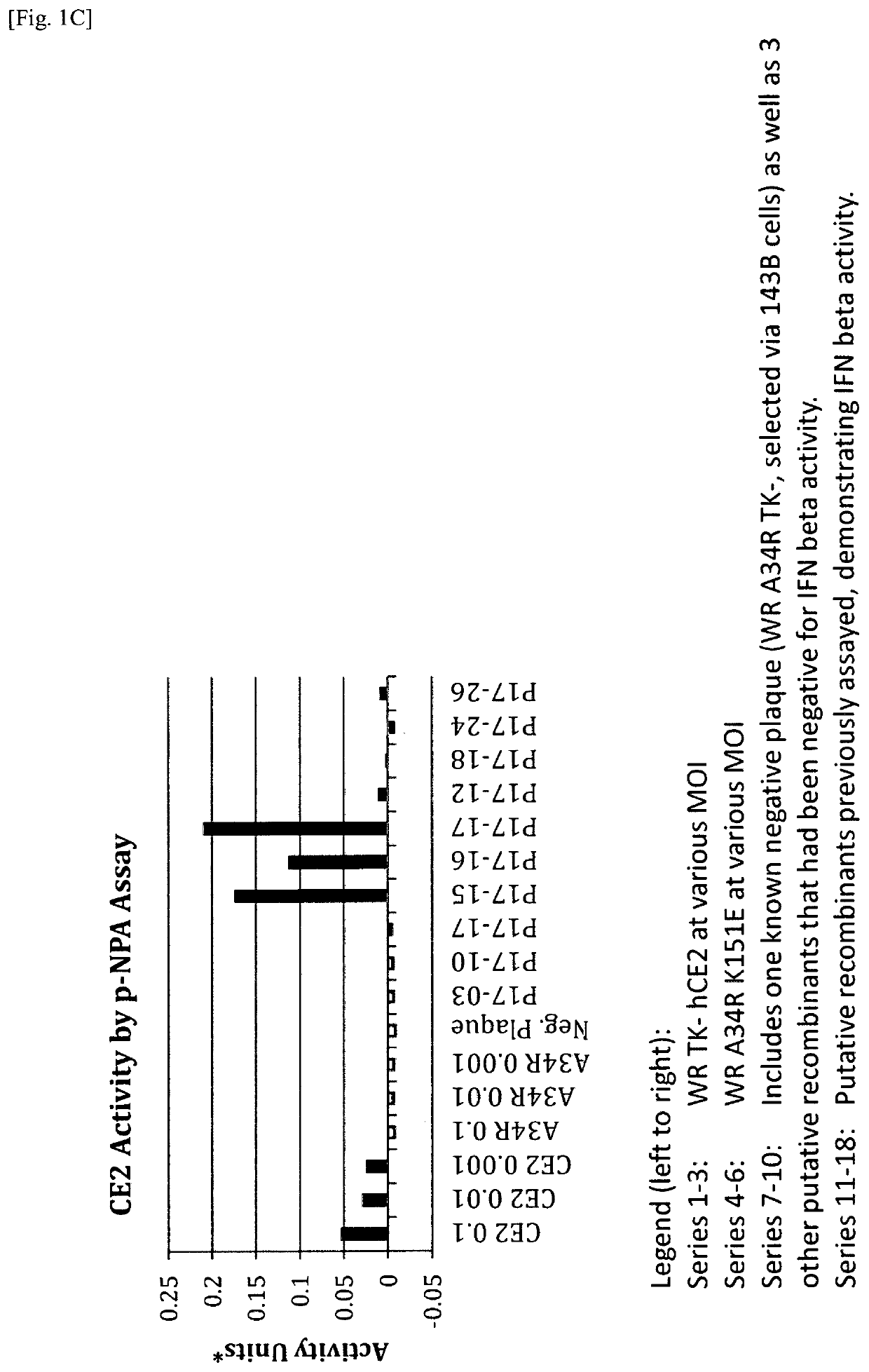Modified oncolytic vaccinia viruses expressing a cytokine and a car-boxylesterase and methods of use thereof
a technology of cytokine and carboxylesterase, which is applied in the field of modified oncolytic vaccinia viruses, can solve the problems of few effective options for the treatment of common cancer types, the accumulation of multi-drug resistance, and the inability to detect and treat cancer, so as to prevent or delay the build-up of multi-drug resistance and the effect of great efficacy
- Summary
- Abstract
- Description
- Claims
- Application Information
AI Technical Summary
Benefits of technology
Problems solved by technology
Method used
Image
Examples
example 1
n of a Recombinant Vaccinia Virus SJ-815 Expressing Human Carboxylesterase 2 and Interferon Beta
[0140]Introduction
[0141]A recombinant vaccinia virus, SJ-815, expressing human carboxylesterase 2 and human interferon beta 1 was generated by inserting these two genes into the thymidine kinase region of Western Reserve strain vaccinia virus. The parental vaccinia virus Western Reserve has a mutation in the A34R gene which is known to produce enhanced amounts of the extracellular enveloped form (EEV) of vaccinia virus.
[0142]The two foreign genes of interest were cloned into a transfer plasmid vector flanked by thymidine kinase (TK) from the vaccinia virus genome J2R. The transfer plasmid was then transfected into 143B cells that had been infected with vaccinia virus Western Reserve A34R. Homologous recombination occurred and recombinant virus was obtained in a cell lysate. For TK selection, the reagent 5-bromo-2′-deoxy uridine (BrdU) was used to isolate TK− virus, since in the presence o...
example 2
Characterization of SJ-815 Virus
[0161]Introduction
[0162]The SJ-815 virus was evaluated using in vitro cell culture assays for plaque size, viral yield, infectious particle quantity, viral protein production, infected cell morphogenesis, and extracellular envelop virion (EEV) formation.
[0163]Plaque Assays
[0164]For plaque assays, U-2 OS or BS-C-1 cell monolayers in 6-well tissue culture plates were infected with 10-fold dilutions of WR, WR.A34R, SJ-815, or mSJ-815 virus. After 2 hours of absorption, the virus inoculum was removed, the cells were washed with D-MEM or E-MEM with 2.5% FBS, and medium containing 3% methylcellulose was added. The infection was allowed to proceed for 72 or 48 hours at 37° C. The monolayer was then stained with 0.1% crystal violet for 1 hour, washed, and the plaques were counted. The observed plaque size of SJ-815 was smaller than other viruses in U-2 OS (FIGS. 3A&B and BS-C-1 cells (FIG. 3B).
[0165]OS cells had a smaller observed plaque size than BS C-1 cell...
example 3
haracterization of SJ-815 Virus Efficacy and Toxicity
[0184]Introduction
[0185]The SJ-815 virus was evaluated in-vivo by measuring the impact of murine SJ-815 viral administration, both alone and in combination with irinotecan treatment, on tumor growth, animal survival, and organ weight.
[0186]MC-38 Murine Colon Carcinoma Growth
[0187]C57BL / 6 mice were implanted subcutaneously with MC-38 mouse colon cancer cells (2×106 cells per mouse). Once tumors had formed (100-200 mm3), mice were randomized into 4 treatment groups (n=5 mice / group): (1) Phosphate buffered saline (PBS) alone, (2) WR.TK−.mGMCSF (four intravenous administrations of 1×108 pfu given every three days), (3) WR.TK−.mGMCSF (same schedule as 2 via intratumoral), and (4) treatment with mSJ-815 with the same treatment schedule as referenced and control administered via intratumoral. Subsequent tumor burden was followed by caliper measurement and mice were sacrificed when their tumor reached 1,500 mm3. Mice were weighted every 2...
PUM
| Property | Measurement | Unit |
|---|---|---|
| size | aaaaa | aaaaa |
| size | aaaaa | aaaaa |
| size | aaaaa | aaaaa |
Abstract
Description
Claims
Application Information
 Login to View More
Login to View More - R&D
- Intellectual Property
- Life Sciences
- Materials
- Tech Scout
- Unparalleled Data Quality
- Higher Quality Content
- 60% Fewer Hallucinations
Browse by: Latest US Patents, China's latest patents, Technical Efficacy Thesaurus, Application Domain, Technology Topic, Popular Technical Reports.
© 2025 PatSnap. All rights reserved.Legal|Privacy policy|Modern Slavery Act Transparency Statement|Sitemap|About US| Contact US: help@patsnap.com



